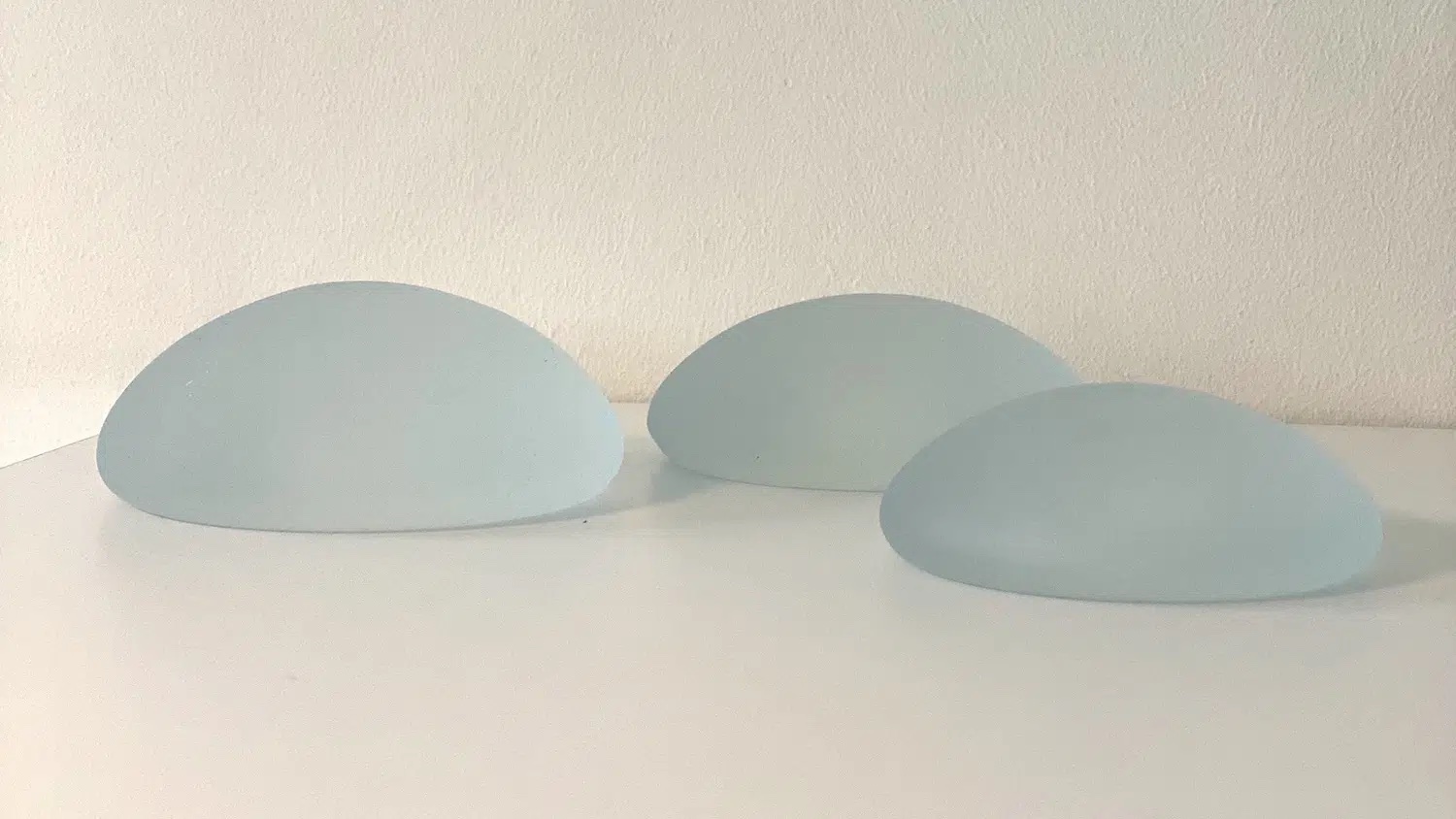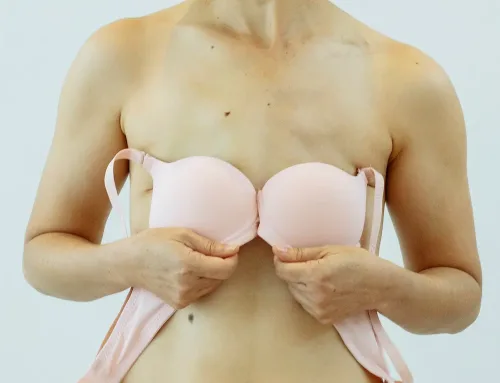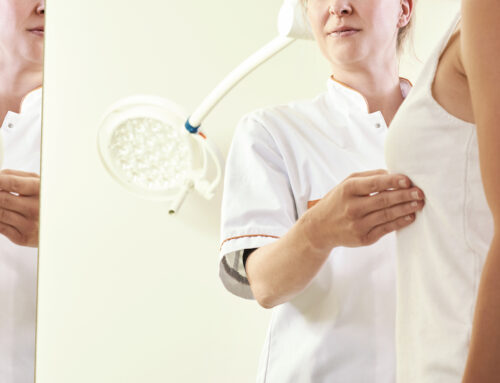10 questions about breast implant removal
Feeling MOOI yourself starts with taking good care of your body and mind. In some cases, this means replacing or even removing your existing breast implants. If you have had breast augmentation with breast implants in the past, it is wise to have your breasts checked by a plastic surgeon once every 10 years. Thinking about permanently removing your breast implants? In this blog, we address 10 frequently asked questions surrounding the removal of your existing dentures.
1. Why do women have their breast implants removed?
If you are wondering why women have their breast implants removed, there are several possible reasons. The most common reason is excessive capsular contract ure and capsular contraction. Your body then creates too much connective tissue around the prosthesis, which can lead to pain and a change in the shape of the breast. Your breasts may also feel harder and look less beautiful. Another reason is that there is a crack in or leakage of the breast implant. Some women experience unexplained health complaints such as headaches and fatigue after breast implant placement. This is also known as Breast Implant Illness (BII). Several studies are currently underway to learn more about BII; it is not yet an official disease or complication.
In addition, there are also women where there is no disease or capsular contracture, but have personal reasons why they want to remove their breast implant.
Read more about the treatment here.
2. What will happen to my breasts if I have my breast implants removed?
This varies from person to person. How your breasts look after surgery depends on many factors. For example, before the breast augmentation, did you have some of your own breast tissue, or was it almost nonexistent? How many ‘cc do your breast implants contain? If you had your breasts enlarged by a few cup sizes, the difference will be greater than if you had your breasts enlarged by one size. It’s best to schedule a no-obligation consultation with one of our plastic surgeons. During the consultation we discuss your desire, can give a better estimate of the result and discuss possible options.
3. What are usually the options after complete removal?
When you want to have your silicone breast implants permanently removed, this is usually a well-considered choice. You don’t want new breast implants to replace your old ones. Whether and what options are available to beautify your breasts after removal is personal. For women with sufficient body fat, breast augmentation with lipofilling is often a great alternative. Instead of silicone prostheses, your own body fat is put back into your breasts. The plastic surgeons at MOOI Clinic helped develop this technique and are therefore fully specialized in it.
If your breasts without implants are very empty and droopy, a breast elevator is an option to achieve an aesthetically pleasing result. During a consultation, the plastic surgeon will fully educate you on the options you can consider.
4. Is removal covered by health insurance?
This depends on why you want to have your breast implants removed. You only qualify for (partial) reimbursement if there is a medical reason to have them removed. You can read more about it here.
5. How are breast implants removed?
There are several ways your breast implants can be removed. In addition to the breast implant, the capsule may also be removed if necessary. This is not always necessary. However, when the capsule has been thickened or inflamed, it may make sense to remove the capsule.
Yet another method is the “en block” method. In an “en block removal,” the goal is to leave the capsule intact as a whole and remove it with prosthesis in total. This is often not the case with a standard switch or removal. Here, the prosthesis is often taken out first and then the capsule. This is technically easier. To do en block, the scar must be made larger, also the healthy tissue can be damaged more and there are additional risks such as causing a pneumothorax or bleeding. The operation also takes a lot longer. Therefore, this procedure is not routinely advised
6. After removal, are all the silicones also immediately out of your body?
The presence of silicone in the breast tissue surrounding an implant can occur and is well known: this has been stated, among other things, in the NVPC’s surgical leaflet silicone breast implants, which plastic surgeons use when educating their patients, for many years. However, whether the presence of silicone particles also causes (health) complaints and what the likelihood of this is has not been demonstrated to date. Indeed, there are several studies showing that silicone particles are found in blood and even breast tissue even in women without breast implants. This is probably due to consuming food and beverages, which also contain these particles. After removal of your breast implants, “the silicone” is out of your body, but the tiny particles are not immediately gone. Your body will remove most of the particles on its own, but this takes time.
7. Are there breast implants without silicone?
There are breast implants that are filled with saline. It is good to know that the shell of the breast implant is still made of silicone, but the filling is different. Water-filled means filled with physiological salt, or saltwater. For example, physiological salt is also given by infusion, and it has the same ratio of sodium as is present in our bodies. The advantage is that in the event of a leak, only physiological saline leaks out, which can simply be urinated out. In addition, you also notice it right away when there is a leak because the breast immediately shrinks. This is not the case with a silicone-filled prosthesis. However, water-filled implants also have disadvantages; for example, they feel harder to the touch.
8. Is recovery faster than with my breast augmentation?
You may experience less pulling skin because in this case we actually make your breasts emptier. As with your breast augmentation, you will need at least 6 weeks to recover after this surgery. Temporary fluid accumulation may occur, sometimes lasting longer due to the resulting prosthetic cavity.
9. Are there any complications that may occur during or after this surgery?
As with any surgery, there is a risk of bleeding, infection or impaired wound healing during implant removal. This is usually not serious and easily remedied. Temporary fluid accumulation may occur, sometimes lasting longer due to the resulting prosthetic cavity. Irregularities that are also there with a breast implant can sometimes become more visible. And finally, even with an extensive capsulectomy, for example, the removal of healthy tissue can reveal irregularities.
Sensation in the nipple may be reduced or sometimes even hypersensitive at first. Gradually this will recover. In an occasional case, numbness of the nipples occurs when much capsular tissue must be removed, and in very rare situations, loss of the nipple occurs.
10. What will the scar look like later?
The final appearance of scars varies from person to person. To get a beautiful result, subcutaneous sutures are used. Nevertheless, some clients may develop thick, bumpy scars. In any case, the scars are pink at first and gradually fade during the first year. It is important to note that scars never become completely invisible. If you have very active scars, this can be treated through a special scar plaster or with injections. These treatments are covered by insured care. However, this will come at the expense of your deductible. If necessary, disturbing scars can be corrected later.








